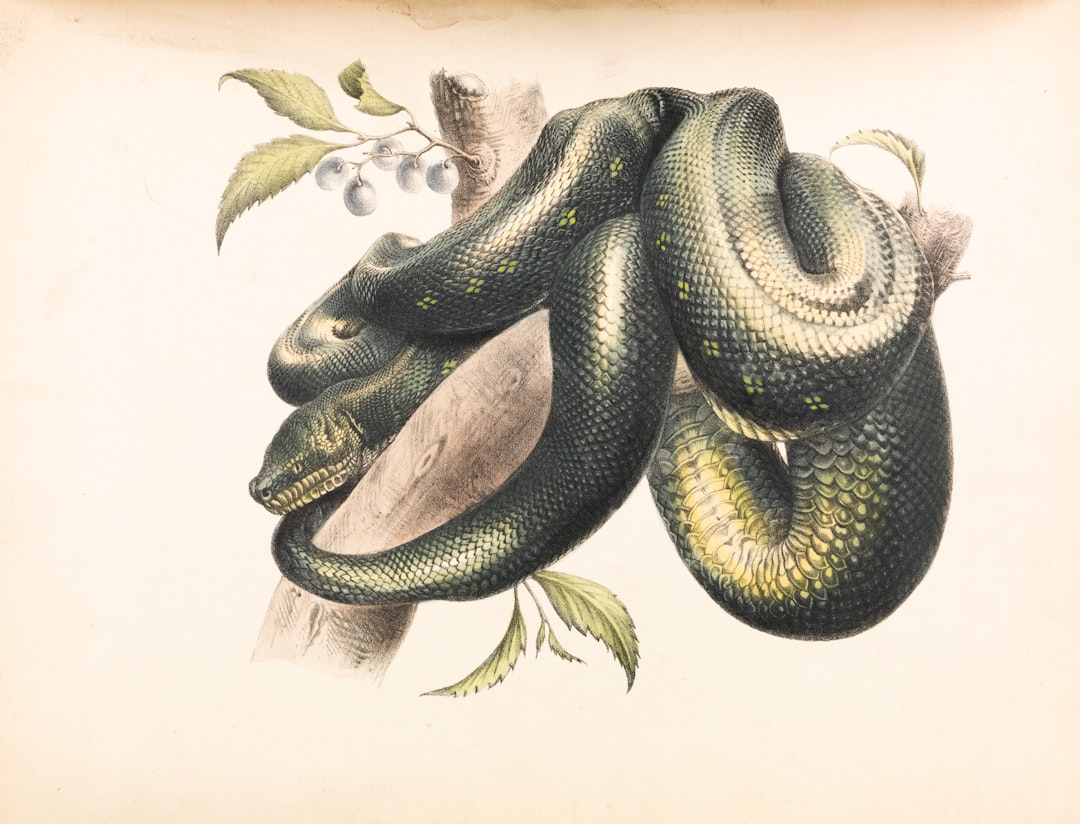Snakes are among the most intriguing creatures on earth. These fascinating reptiles have been featured in several religions and cultures throughout history, including the Bible. What does the Bible say about snakes? In this article, we explore the biblical teachings on serpents, diving into references from the Old and New Testament, discussing symbolism, and interpretations of these biblical stories. Keep reading to discover more about these biblical creatures.
Biblical References to Snakes

The Bible has many references to snakes, also known in scripture as serpents. While some are literal mentions of the reptile, others use snake symbolism to represent deeper religious beliefs and themes. In this section, we will explore some of the most well-known references to snakes in the Bible.
- The Serpent in the Garden of Eden
One of the most famous references to a serpent in the Bible is found in the Book of Genesis. The story of Adam and Eve in the Garden of Eden tells of a serpent who tempts Eve to eat fruit from the forbidden Tree of Knowledge. This act leads to the fall of humanity and the introduction of sin into the world. Many interpret the serpent as a symbol of Satan or the devil, who seeks to deceive and lead people away from God.
- Symbolism of Snakes in Scripture

Throughout the Bible, snakes are often used as symbols of deceit, temptation, and danger. For example, in the Book of Numbers, God sends venomous snakes to punish the Israelites for their disobedience. However, He also provides a way for them to be saved by looking upon a bronze snake. This act represents the balance between the danger of snakes and the protection and wisdom that God provides.
- Snakes in the Old Testament
In addition to the story of the Garden of Eden, there are many other references to snakes in the Old Testament. For example, in Psalm 58, the wicked are compared to venomous snakes who continually plot evil. In the Book of Isaiah, the prophet foretells of a time when the venom of snakes will no longer harm people, symbolizing the hope of a future world free from sin.
- Snakes in the New Testament
In the New Testament, Jesus himself uses snake imagery when speaking to his disciples. In Matthew 10:16, he tells them to be as wise as serpents and as harmless as doves. This call for both wisdom and innocence represents the balance required to navigate the temptations and challenges of the world.
- Interpretations of Biblical Teachings on Snakes
The interpretations of the Bible’s teachings on snakes vary among different Christian traditions and denominations. Some see the serpent in the Garden of Eden as a literal creature, while others interpret it as a symbol of Satan or a metaphor for the dangers of temptation. Additionally, some Christians view snakes as symbols of healing and renewal, as seen in the ancient medical symbol of a snake wrapped around a staff.
In conclusion, the Bible has many references to snakes, both literal and symbolic. While some see them as creatures of danger and temptation, others see them as symbols of wisdom, healing, and protection. It is up to each individual to interpret these teachings in their own way and find meaning and guidance in their faith.
The Serpent in the Garden of Eden
The Garden of Eden is one of the most famous scenes in the Bible. It is where God created everything and man lived in complete harmony until Eve took a bite out of the forbidden fruit. But what about the serpent? This is where things get interesting.
In Genesis 3:1, the serpent is introduced as “more crafty than any of the wild animals the Lord God had made.” The serpent engages Eve in conversation and questions God’s commandment not to eat from the tree of the knowledge of good and evil. Eventually, Eve takes a bite and then gives the fruit to Adam, and sin enters the world.
Many scholars believe that the serpent in the story is Satan, the devil himself. The Book of Revelation, in the New Testament, uses the imagery of a serpent to describe Satan as well. Others believe that the serpent was just a snake with no special significance, and that the story is symbolic rather than literal.
Regardless of whether the serpent was meant to be Satan or just a snake, the story of the Garden of Eden serves as a warning against temptation, deception, and disobedience. It also serves as a reminder that we must always trust in God’s guidance and protection, lest we fall into danger or sin.

So, what does this story teach us about snakes? In the context of the Garden of Eden, the serpent was a symbol of deception, fear, and danger. But snakes are not inherently evil or bad. In fact, there are many positive ways to interpret snakes in scripture and religious beliefs. We’ll explore those in the next section.
Symbolism of Snakes in Scripture
Snakes have been a topic of discussion in Christianity, and they appear throughout the Bible. In fact, the mention of snakes or serpents is symbolic of the duality of their nature – their dual ability to heal and harm. The serpent has become a powerful symbol in the Bible, representing temptation, deception, fear, trust, faith, protection, danger, wisdom, and guidance. Here are some of the important ways snakes are symbolized in the Bible:
- Temptation
The most famous reference to a snake in the Bible is from Genesis, where the serpent tempts Eve to eat the fruit from the tree of life. Satan, who takes the form of a serpent, deceives Eve by talking her into eating the fruit, which ultimately leads to her banishment from the Garden of Eden. This is a symbolic story that teaches us how temptations can lead to the consequences we might not be ready to accept.
- Deception
It is essential to note that in biblical scripture, the serpent is always linked to deception. This can also be seen in Matthew 7:15, where Jesus warns us about false prophets, calling them “wolves in sheep’s clothing.” Just like the serpent, false preachers are smooth and cunning with their words, eventually leading to deception.
- Fear
In Numbers 21: 4-9, the Children of Israel were plagued with venomous snakes. However, any person who looked up to a bronze snake elevated by Moses was freed from the venomous sting. The snake, in this case, represents fear, and looking up at it represents faith leading to protection.
- Faith
In John 3:14–15, Jesus teaches about his death, saying he would be lifted up, much like the bronze serpent Moses raised in the desert. Just as the Israelites who looked upon that serpent were saved from the venomous snakes, those who believe in Christ and look to him will gain eternal life (John 3:16).
- Protection
« Uncovering the Mystery: Lost Books of the Bible Unveiled
Walking with God: The Ultimate Guide to Growing and Strengthening Your Faith »
In Psalms 91:13, the snake is believed to be under our feet, symbolizing protection. The passage suggests that he who trusts in God is sheltered from harm and will ‘tread on the serpent’ and trample the lion.
In conclusion, snakes are some of the most powerful symbols in scripture, embodying a range of ideas. From temptation to wisdom, the use of snakes as symbols has helped to teach various moral lessons in a way that is both powerful and memorable.
Snakes in the Old Testament
The Old Testament holds numerous references to snakes and their symbolism in the stories and beliefs of the Jewish and Christian faiths. These references appear in books throughout the Old Testament, from Genesis to Psalms to Isaiah.
In Genesis, we see one of the most well-known references to a serpent, in the story of Adam and Eve in the Garden of Eden. Most readers will recall that the serpent was the medium through which the Devil deceived Eve into eating the forbidden fruit. This episode is commonly interpreted as a warning of the dangers of temptation, and of the need to trust in God’s guidance as a protection against the wiles of the devil.

Snakes also appear elsewhere in the Old Testament as a symbol of fear and danger. In the book of Exodus, for example, God sends venomous snakes to punish the Israelites for their lack of faith. The snakes are interpreted as a consequence of their disobedience and lack of trust, and their venomous bite serves as a reminder of the danger of turning away from God.
Conversely, snakes can also be seen as symbols of wisdom and guidance. In the book of Numbers, Moses is instructed to make a bronze serpent and place it on a pole, with the promise that anyone who looks at it after being bitten by a venomous snake will be healed. This serpent is also seen as a symbol of wisdom and guidance, as it signifies the need to look to God for help and protection.
Overall, the Old Testament’s references to snakes reveal a complex set of beliefs and symbolisms that have shaped the religious beliefs of millions of people throughout the centuries. From tempting serpents in the Garden of Eden to venomous snakes sent as punishment, snakes have served as a powerful reminder of the danger of turning away from God, while also holding the potential for guidance, wisdom, and healing.
Snakes in the New Testament
The New Testament also makes references to snakes, albeit in a much different context than the Old Testament. Here are a few examples:
-
In Matthew 10:16, Jesus tells his disciples to be “wise as serpents and innocent as doves.” This is a reminder to be shrewd and cunning without losing one’s integrity.
-
In Luke 10:19, Jesus tells his followers that they have authority over “snakes and scorpions.” This could be interpreted literally as a reference to dangerous creatures, but it could also be a metaphorical nod to the power of faith.
-
In John 3:14-15, Jesus makes an analogy between the story of Moses lifting up a “serpent in the wilderness” and his own impending crucifixion. Just as those who looked upon the bronze snake were healed, so too will those who believe in Jesus be saved.
-
In Acts 28:3-6, Paul is bitten by a venomous snake on the island of Malta, but he suffers no ill effects. This reinforces the idea that those who have faith in God are protected from harm.

Overall, the New Testament’s references to snakes tend to be less focused on fear and danger than in the Old Testament, but they still carry important symbolism and messages about trust, faith, and protection.
Interpretations of Biblical Teachings on Snakes
Throughout history, snakes have portrayed a wide range of roles in various cultures and religions. When it comes to Christianity, snakes have appeared in different Bible verses both in the Old and New Testament, presenting different meanings and teachings.
Some interpret the occurrences of snakes in the bible as mere historical accounts, while others look at them metaphorically, as symbols of wisdom, temptation, fear, protection, guidance, and even evil and deception.
For instance, an interpretation suggests that the appearance of the serpent in the Garden of Eden as the embodiment of the devil was not only meant to show man’s fall into temptation, but also to demonstrate God’s love, mercy, and redemption plan through sending His Son to overcome sin and Satan.
Additionally, some believers relate snakes to the biblical story of Moses and the bronze serpent. In this story, Moses was instructed to make a bronze serpent and put it on a pole to save the Israelites who were bitten by venomous snakes. Many Christians interpret this story to mean that salvation is available to those who look up to Jesus, who was lifted up on the cross, just like the bronze serpent on the pole.

Another interpretation of snakes in the Bible points to their role in testing faith and trust in God. In Mark 16:18, Jesus told His disciples that they would be able to handle poisonous snakes, and if they drank any deadly poison, it would not harm them. This passage has led some Christians to believe that through their faith in God, they are protected from harm and danger.
In contrast, others view snakes as creatures that symbolize fear and danger. For instance, in Psalm 91:13, the Bible says that believers will trample on snakes and lions. This interpretation highlights that God can protect believers from all the dangers of the world, whether physical or spiritual.
Ultimately, the interpretation of snakes in the Bible depends on an individual’s perspective and religious background. However, what remains clear is that the Bible uses different animal symbolism to teach different values and lessons. Thus, when considering what the Bible says about snakes, it is essential to research not just the verses that mention them but also to keep an open mind to different interpretations of the text.












